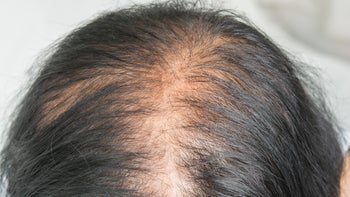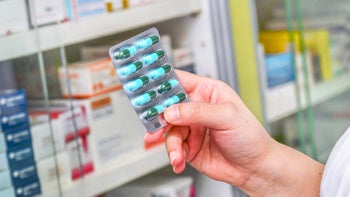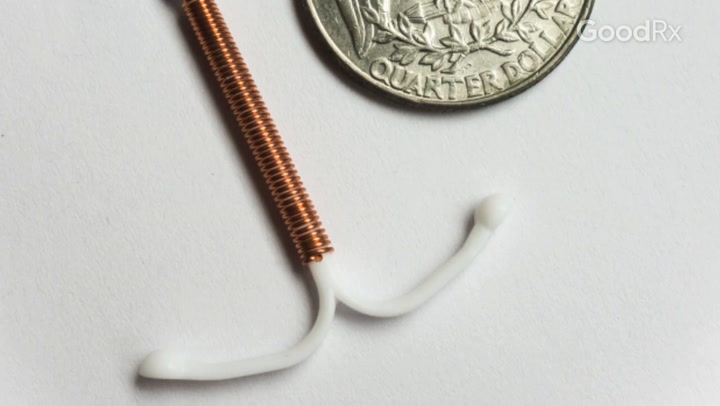
Blisters on Your Private Parts? 10 Causes of Female Genital Sores
Key takeaways:
It’s not unusual to notice sores around the vulva and vagina, such as rashes, scratches, blisters, or lumps.
Common causes of genital sores are infections, skin growths, skin conditions, and injury.
Some infections that cause genital sores are sexually transmitted. This means you can pass them on to sexual partners if you don’t get treatment.
If you notice a new sore on your private parts that doesn’t go away, it’s best to see a medical professional. They’ll help make a diagnosis and get you the right treatment.
Table of contents

It’s not uncommon to discover a bump, lump, or sore in your private parts. And, that discovery can be alarming. But it’s important to keep in mind that there are many different causes for female genital sores. So, you’ll want to get a medical professional to take a look at your sores down below. They can evaluate you and help you get a diagnosis and the proper treatment.
Let’s review 10 of the most common causes of vaginal sores and a description of what they look like.
1. Injury
Injury or trauma to the skin can sometimes cause genital sores. Injury to the vulva or the skin around the vulva and vaginal opening can be caused by:
Fingernail scratching
Razor cuts
Repeated friction, like from underwear that’s too tight
Injury from rough sex or use of sex toys
Skin irritation from hair removal products or other products
Most injuries to the skin will heal on their own as long as they aren’t injured again. So if a sore doesn’t go away, then it’s probably caused by something other than an injury.
2. Skin rashes
Chronic skin conditions can lead to genital sores if they affect the skin in the pubic area. Some skin rashes just affect the genitals, while other skin conditions may affect other parts of the body. Here are some clues to look for:
Hidradenitis suppurativa: This is a rash caused by inflammation of the sweat glands. It causes painful lumps and abscesses under the skin that come and go and drain fluid. It’s common in the groin, inner thighs, armpits, and under the breasts. There’s no cure, but treatment can help with symptoms.
Lichen sclerosus: This condition causes white or light brown wrinkled patches on the genitals. These patches are usually itchy, but burning or pain are possible, too. There’s no cure, but different treatments are available for the symptoms.
Behçet’s disease: This is a chronic condition caused by inflamed blood vessels. Behçet’s can lead to many different symptoms, including painful sores in the mouth and on the genitals. Sores typically heal and then come back. There’s no cure, but medications can help with symptoms.
Contact dermatitis: This happens when your skin develops an allergy or irritation to a product, like a soap or lotion. The result is intense itching, which can cause pain, sores, or bumps in the pubic area. Identifying and avoiding the trigger cures the rash.
Genital warts: Learn how to recognize the signs and symptoms of this common infection.
If you’re sexually active, you should get tested: Find out why testing for STIs is important and which ones you should consider.
Can you do at-home STI testing? Yes, these tests can be done from the comfort of your own home.
3. Skin growths
Genital sores can also result from skin growths. Common vaginal skin growths include:
Cysts: These are small sacs under the skin that can feel like a ball or pebble. They’re usually painless, but sometimes they can become inflamed and tender. No treatment is needed unless they bother you.
Folliculitis: These are small red or brown bumps that look like acne. Folliculitis is caused by inflammation around the hair follicles, often as a result of friction or shaving. Treatment usually involves removing the cause.
Angiomas: These are harmless blood vessel growths. They form small red or violet bumps, and they usually don’t cause any symptoms. They can bleed if they’re rubbed or scratched, though.
Skin cancer: This is rare in the genitals, but important to mention. Skin cancer can look like a brown or black growth, or a red bump that continues to grow and bleed. If you think you could have skin cancer, don’t delay getting it checked out by a dermatologist or a healthcare professional.
4. Molluscum contagiosum
Molluscum is a common skin infection caused by a virus. It’s usually seen in children, but it can also pass between adults through close contact, like sexual contact. Molluscum isn’t serious. It eventually goes away on its own without treatment, but that can take 6 to 12 months. And, you’ll need to keep the bumps covered to prevent transmitting the infection to other close contacts. Treatments can help the bumps go away sooner.
Read more like this
Explore these related articles, suggested for readers like you.
What molluscum looks and feel like
Molluscum causes small, smooth bumps to form on the skin. They can be pink, red, skin-tone, or brown. An outbreak may just have a few bumps, or it can be dozens. It’s common on the upper thighs, groin, buttocks, and lower abdomen. Molluscum can become inflamed, crusty, and itchy, but some people don’t experience any symptoms.
5. Genital warts
Genital warts are caused by a virus called human papillomavirus (HPV). They’re transmitted through sexual contact. You can’t treat the virus, but there are different ways to remove the warts. Options include medicated creams or surgical removal. Sometimes, warts go away on their own.
The best way to protect yourself against genital warts is to get the HPV vaccine before you become sexually active. This provides protection against most HPV strains that cause genital warts (and cervical cancer, which is caused by the same HPV virus).
What warts look and feel like
It can take months for genital warts to develop. When they do, they can look different from person to person. Some people just have one or two warts, while others may have many clustered together. Genital warts form bumps that are skin-colored. They can be flat, or raised and bumpy. Their size varies, too — from smaller than a pencil eraser to several inches wide. Most warts don’t cause any symptoms, but sometimes they can be itchy or painful.
6. Genital herpes
Herpes is a sexually transmitted infection (STI). It causes painful blisters or sores on the genitals. Some people experience mild or no symptoms with a herpes outbreak. This makes it easier to spread. There’s no cure for herpes, but there are medications you can take to keep symptoms at bay and lower the risk of transmission.
What herpes looks and feels like
During a first herpes outbreak, an individual may experience general symptoms like fever and chills. They may also get a tingling sensation near the groin. A few days later, the typical herpes rash develops. It starts off as a discolored patch of skin, covered with small bumps. This rash will look red in fair skin, and violet/brown in darker skin tones. Later, the bumps turn into fluid-filled blisters, and then open sores. This stage is painful. The outbreak usually heals within 2 weeks, but it can take longer.
7. Syphilis
Syphilis is a bacterial infection that’s spread through sexual contact. A pregnant woman with the infection can also pass it to her unborn child. Syphilis is curable with antibiotic treatment. In the U.S., syphilis rates are increasing, so catching and treating this disease early are important to preventing long-term health complications.
What syphilis looks and feels like
Syphilis can cause one or more open sores, called chancres, on the genitals. Sores can appear between 10 and 90 days after infection. The sores are usually round and painless, so you may not notice them. They heal on their own in 3 to 6 weeks — even without treatment. But, even after the sores heal, you still need treatment to prevent transmitting syphilis to others, and prevent long-term damage to your brain and other organs.
8. Chancroid
Chancroid is a sexually transmitted infection that can lead to painful genital sores. Chancroid can be confused with other conditions, like herpes or syphilis, so it’s important to get a diagnosis from a healthcare professional. A chancroid infection is treatable with antibiotics, so early treatment is key to preventing any complications and stopping its spread to sexual partners. Infection rates are decreasing in the U.S. and it tends to occur sporadically.
What chancroid looks and feels like
Chancroid sores are typically soft and painful ulcerations with a gray or yellowish base. They look a lot like the sores you get with syphilis — the main difference is that while sores from syphilis are painless, the sores you get from chancroid are painful. The sores are usually accompanied by swollen and painful lymph nodes in the groin area.
9. Chlamydia
Chlamydia is one of the most common STIs worldwide. It’s caused by a bacteria and is usually associated with vaginal discharge, painful urination, or pelvic pain. A different strain of the chlamydia bacteria can cause lymphogranuloma venereum (LGV), which can lead to genital and rectal sores. This is a rare infection in the U.S.
Both types of chlamydia infection are treatable with antibiotics, but it’s essential to get tested and get treatment promptly to avoid complications.
What chlamydia looks and feels like
The common type of chlamydia infection often doesn’t have any symptoms at all. When you do get symptoms, though, you can get genital discharge, painful urination, or discomfort during sex. If you get a sore due to LGV chlamydia, it will usually be a painless ulcer that’s followed by painful and swollen lymph nodes in your groin.
10. Granuloma inguinale (donovanosis)
Granuloma inguinale, also known as donovanosis, is a bacterial infection caused by Klebsiella granulomatis. It’s relatively rare in the U.S. but more common in tropical and subtropical regions, such as parts of Africa, India, and South America. Treatment with antibiotics is usually effective in clearing the infection.
What granuloma inguinale looks and feels like
Granuloma inguinale begins as painless, raised bumps on the genitals. Over time, these bumps break down into ulcers that are painful, red, and smooth in appearance. They might bleed when you touch them. The infection typically starts in the genital area, but it can also spread to other parts of the body.
How to care for female genital sores at home
The best way to care for a female genital sore at home is to keep the area clean and dry. There are a few tips to follow that can help to reduce your discomfort, like:
When washing, use mild, unscented soap and lukewarm water.
Avoid scrubbing or harsh products that can worsen irritation.
Wear loose-fitting cotton underwear to reduce friction and allow your skin to breathe.
Avoid sexual activity until the sores have healed.
If the sores are painful, consider using over-the-counter (OTC) topical creams or gels that can soothe discomfort. It’s always a good idea to check with a healthcare professional before applying any treatments. Treatment will generally depend on the cause, so you’ll need an expert’s guidance.
When to see a healthcare professional about genital sores
It’s a good idea to see a healthcare professional about genital sores when:
You notice a new sore and the cause isn’t obvious.
You have a worsening sore.
You have a sore that doesn’t improve on its own in a couple of days.
Sometimes a healthcare professional may be able to diagnose the cause of your vaginal sores by looking at the skin and asking you some questions. Other times, you’ll need to have some further tests, such as:
Swabs for infection
Blood tests
Skin biopsy
Once you have the diagnosis, you can get started on the right treatment.
Frequently asked questions
Preventing genital sores starts with practicing safer sex. Using condoms helps to reduce the risk of infections like herpes or syphilis, which are a common cause of sores. If you have a history of herpes, antiviral medications like valacyclovir can help prevent outbreaks as well. You can prevent other types of genital sores by avoiding trauma or injury to your genitals, especially during sex or when grooming.
Healthcare professionals can diagnose the cause of genital sores by first taking a detailed history of your symptoms and performing a physical examination. Depending on the appearance and symptoms of the sores, they may recommend blood tests, urine samples, or a swab of the sore to identify any infections. In some cases, a biopsy may be necessary.
Not all bumps on your genitals are caused by a sexually transmitted infection (STI). Ingrown hairs, cysts, or skin conditions like folliculitis are common culprits of bumps in the pubic area. It’s not always easy to tell if it’s an STI by looking, though. If you’ve had any high-risk sexual encounters, it’s a good idea to see a healthcare professional for an evaluation.
The bottom line
If you notice a new sore in your genital area, it’s important to find out the cause. One thing to consider is an STI, such as herpes, syphilis, or genital warts. Another common cause is skin injury, which can happen during sex or intimate personal care. There are other causes, such as skin growths (like cysts) and some skin rashes. A trained medical professional can usually diagnose the cause by looking at the skin and carrying out some simple tests.
Why trust our experts?



References
Centers for Disease Control and Prevention. (2021). Chancroid.
Centers for Disease Control and Prevention. (2025). About chlamydia.
Centers for Disease Control and Prevention. (2025). About syphilis.
Chamli, A., et al. (2023). Lichen sclerosus. StatPearls.
Irizarry, L., et al. (2023). Chancroid. StatPearls.
MedlinePlus. (2023). Donovanosis (granuloma inguinale).
Rawla, P., et al. (2023). Lymphogranuloma venereum. StatPearls.
Tudor, M. E., et al. (2024). Syphilis. StatPearls.





























